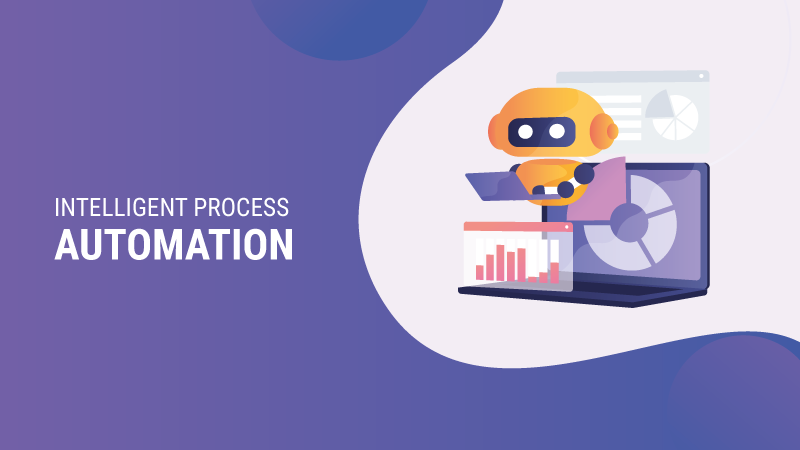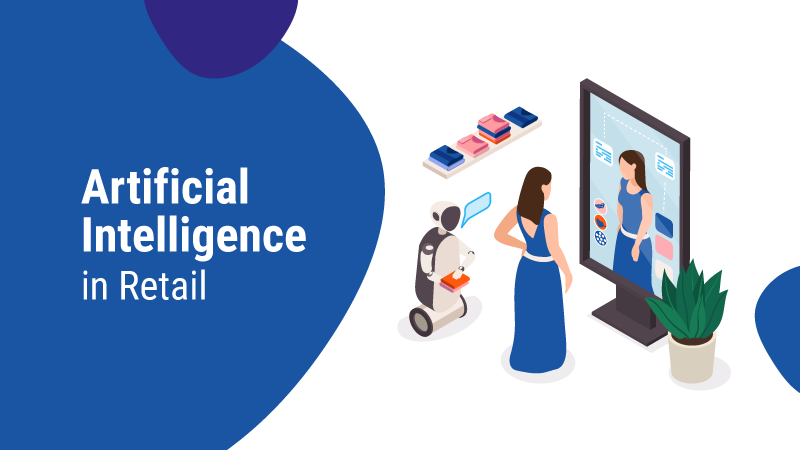What is Intelligent Process Automation (IPA)?

Integration of innovative technologies such as Robotic Process Automation (RPA) Solutions, Artificial Intelligence (AI), Intelligent Character Recognition (ICR) Analytics, Optical Character Recognition (OCR), and Process Mining resulted in Intelligence Automation (IA). The main aim is to combine the most advanced technologies to strengthen a fast end-to-end business process automation. Intelligent automation is also known as Intelligent Process Automation (IPA) and Hyper Automation.
Apart from the definition, there are many things to know about Intelligent Automation and its deployment. Let us begin with the combining forces of IPA.
Technologies that makeup IPA
Intelligent Automation is not a term that stands alone, the technologies involved in IPA make it capable to do everything. Let us take a closer look into the technologies that are a part of IPA.
Robotic Process Automation
Robotic process automation software performs tasks by replacing human workers with software bots. RPA can perform tasks including scanning files, logging into systems, document creation, performing calculations, and report generation.
Artificial Intelligence
AI is the technology in which computer systems mimic human intelligence and evaluate the data quickly than people. AI also avoids making the same mistakes again by learning from the past.
Machine learning / advanced analytics
Machine learning uses an algorithm that can be learned by recognizing patterns in structured data. Mainly there are two types of learning – supervised and unsupervised. Supervised algorithms depend on a set of structured data inputs and outputs and then learn from them while moving forward. Un-supervised algorithms give insights and identify patterns by structured data observation.
- Computer Vision – This includes tools of technology such as Optical Character Recognition (OCR) that changes scanned documents or photos into text.
- Natural Language Processing – Software that allows a computer to comprehend, elucidate, and handle oral or written language.
- Process Mining – A technique to detect business processes as they really are, and then captures and enhances processes after analyzing data.
Are IPA and RPA The Same?
Mostly, there is confusion between the technologies IPA and RPA, but in fact, both are different from each other. Robotic Process Automation includes the use of technological tools and procedures that automate and complete tasks that take time much lesser than human workers. These actions are often rule-based, repetitive, and straightforward. Sometimes, RPA can be troublesome when clients give wrong input. This is where Intelligent Process Automation enters. When RPA is not enough to meet certain requirements, IPA is used to complete complex procedures using AI logic and decision-making approaches.
IPA Use Cases
Below given are some of the major use cases of IPA:
- Email marketing
- Invoice automation
- Customer support
- Recruitment process
- Price comparison
- Financial document analysis
- Insurance claims, and a lot more.
How to get started and deploy Intelligent Process Automation?
Deployment of Intelligent process automation is not complicated as it may sound. IPA can be incorporated easily with existing systems, thus eliminating the need to reconfigure the entire IT of an organization. Let’s see how to deploy Intelligent Process Automation:
Understand your business goals
Start by describing the business objectives and make sure that the IPA is the solution that can lead you to attain your business goals. IPA is a powerful force in driving change, so business leaders need to have maximum clarity of the results they want to achieve before they keep going.
Take a holistic approach
Though automation software can be used within silos in an organization, it is better for the whole organization to approach automation as a whole. Although you may begin to deploy the software in a small test case situation, you may also like to choose a solution that can be employed and embraced by all departments. It will be a good beginning If you can shape the processes by which IPA will assist and examine the potential of the IPA in certain usage situations, in order to do so. Then, appoint a team responsible for making sure that the rest of the organization is on board and at disposition.
Build an MVP
Choose a specific process to create the minimum practical product. When it comes to IPA, this indicates that you want to restructure the existing process in its simplest form with the help of IPA, which will still achieve the expected result. As a result, you can demonstrate the value of IPA to shareholders and pave the way for digital conversion.
Focus on Value
The IPA will certainly allow you to identify immediate and fast benefits, but it should also be considered in terms of long-term consequences. You can measure the amount of standardization required to acquire a process along with the consequence through automation to determine which processes are most valuable (high quality and high impact from automation).
Change management and assignment of responsibility
If you are transforming your organization with automation, you need to make sure you have the availability of the right people and processes. You can build a Center of Excellence for this purpose (CoE), a group that backs the deployment of automation throughout the organization. They will be in charge of vendor management, capacity building, solutions library, and much more. Most Importantly, when you incorporate intelligent process automation or any type of automation into an organization, each person must be on board. It comes with the latest technology, transparent communication of evaluation and, change management.
By utilizing change management, you can integrate the culture of the organization with new practices and willingness to utilize technology in accordance with the guidelines.
Benefits of Intelligent Process Automation
IPA has allowed businesses to reduce their processing time in half. Noted down are some of the major advantages or benefits of IPA.
- Improved efficiency
- Reduced costs
- Improved fraud detection and surveillance
- Enhanced customer satisfaction and experience
- Low risks
- Better employee satisfaction
- Optimized productivity
Wrap Up
Intelligent Process automation is a proven strategic technology that reduces costs or boosts efficiency. But many enterprises are continuously looking to Intelligent Automation to enhance flexibility and address the challenge of meeting rapidly changing customer demands and needs. Smart Orchestration of Intelligent Automation enables designing and building of end-to-end business processes that facilitate flexible and sustainable modern business operating models, to anticipate what is happening, and allow organizations to pave way for changes.
Additionally, IPA can be used by businesses to optimize existing and future processes by evaluating historical data and creating predictions using machine learning algorithms. The IPA provides a framework for a complete overhaul of business processes, while RPA enables businesses to easily automate existing processes.
Get Started with our RPA ServicesRead more about RPA
- RPA in Logistics
- IT Process Automation Explained
- RPA in Banking
- RPA in Education
- RPA in Telecommunications
- RPA in Healthcare
- RPA in Insurance
- RPA in Accounting
- RPA Challenges
- RPA in Real Estate
- RPA Examples
- RPA in BPO
- RPA Security
Blogs by Category
AppForms Artificial Intelligence Blockchain Call Centers Chatbots Cloud Computing Data Management Design Digital Marketing Digital Transformation Enterprise Applications FinTech Insights LowCode Development Microsoft Mobile Apps News Office 365 Robotic Process Automation Security SharePoint Software Development Web ApplicationArtificial Intelligence in Retail

2024-05-23 14:12:28